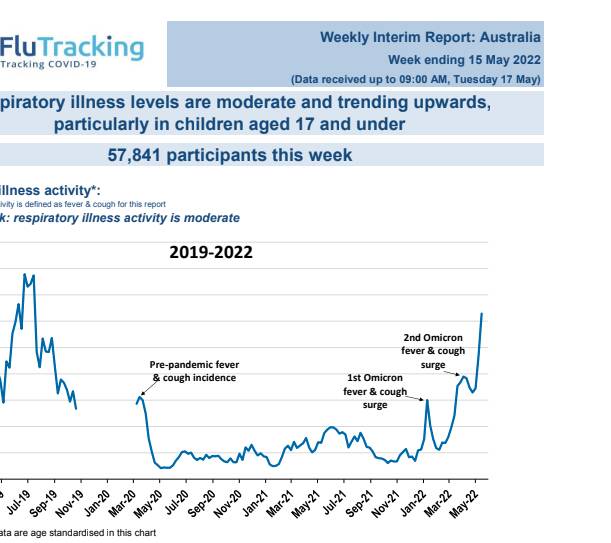
RATES of flu-like illnesses have surpassed pre-pandemic levels, with the percentage of people reporting fever and cough symptoms doubling since April 2020.
Close to 58,000 people participated in FluTracking's latest Australian survey, which shows rates of respiratory illnesses rising to 3.1 per cent - the highest they have been since public health measures were introduced to prevent the spread of COVID-19 in April 2020.
Flutracking founder and University of Newcastle public health physician Dr Craig Dalton said this kind of respiratory illness activity was still considered "moderate", but it was certainly heading in the wrong direction, rapidly.
"I had a hunch it might be slower than this, because flu was slow to rise in the United States even though they had very few controls in place," Dr Dalton said.
"In nature we don't get near-vertical increases for very long, so I'd expect for the rate of increase to moderate in the next couple of weeks."

The FluTracking data measures rates of respiratory symptoms such as coughs and fever, so its results include a mixture of anything from common colds to influenza and COVID-19.
Rates of cold and flu-like symptoms fell to "historically low" levels during the pandemic while the community was adhering to COVID-19 restrictions, isolation and social distancing measures.
Dr Dalton said international border closures also played a role, as fewer people were travelling to the country, and those who did were in quarantine before returning into the community.
"Which means if they had influenza they probably had it, got over it, and were no longer infectious when they left," he said. "The use of masks would have also interrupted transmission, social distancing and all of the restrictions on gatherings would have decreased transmission if any instances of spillover happened."
FluTracking data also shows the percentage of people taking time off work or their normal duties due to respiratory symptoms was higher than the pre-pandemic five-year average.
"It is a different comparison, really, because people with Omicron will take time off because they are infectious, whereas people with the flu would just go to work in past years," he said.
"But regardless of whether they are too sick to work or are just politely staying at home, respiratory illnesses are certainly having a bigger impact on absence from normal duties and work than prior to the pandemic."
Respiratory illnesses were particularly high in children under five, followed by those aged five-to-17.
Dr Dalton said June, July and August were usually the worst months for respiratory illnesses.
"Luckily Omicron has become a milder illness in the vaccinated, so that has really helped relieve societal pressures," he said.
To participate in FluTracking surveys visit flutracking.net.







